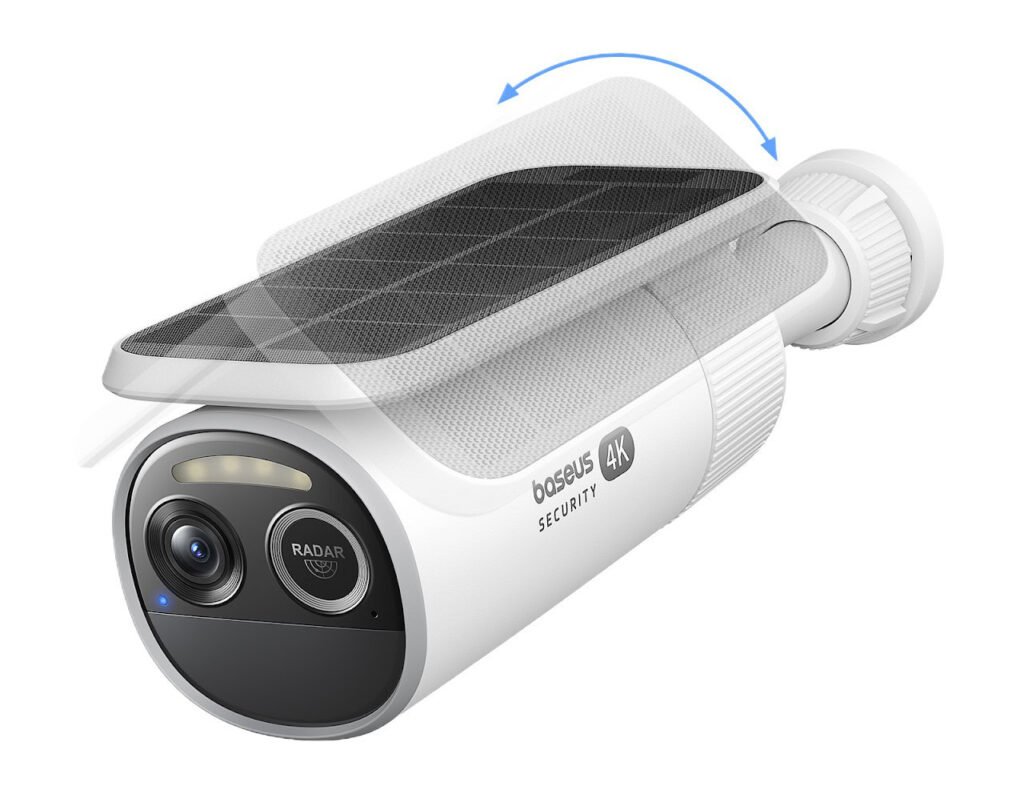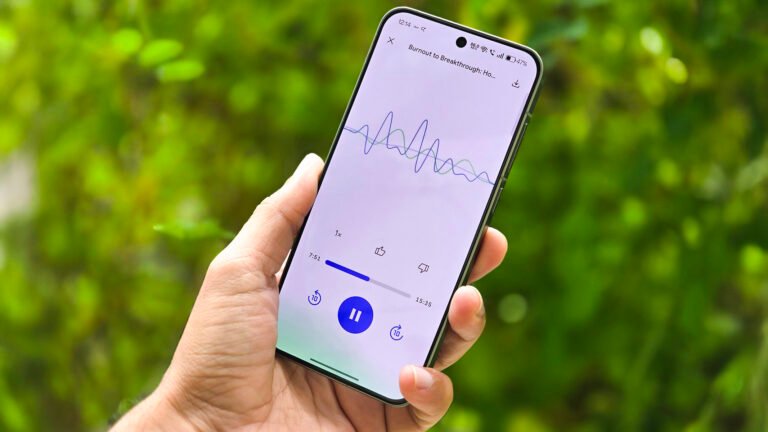

If you’ve never owned a security camera (or you’ve only dabbled with budget models), the Baseus S2 is an easy recommendation to start strong. It blends premium features—4K video, smart detection, and truly wire-free power—into a setup that’s simple to mount, simple to use, and designed to run indefinitely without you thinking about batteries or subscriptions.
How the Baseus S2 stands out
Capable enough for experts, perfect for beginners
First, the headline capability: power you don’t have to manage. The Baseus S2’s built-in solar panel automatically tracks the sun, harvesting more energy than a fixed panel and keeping the internal 7,800 mAh battery topped up. In multiple expert tests, that translated to real “set-and-forget” performance. It holds a charge pretty much, even when triggered frequently in regions with a lot of cloudy weather. That’s exactly the sort of reliability newcomers want from a first system.

The second pillar is its intelligence. The S2 combines radar with passive infrared (PIR) motion sensing, a dual approach designed to cut out phantom alerts from swaying branches or passing shadows. That means you’ll fewer false alarms than with typical PIR-only cameras. Baseus’ software implementation supports focused activity zones, privacy zones, and AI-based detections for people, vehicles, and pets. It’s a polished default configuration for beginners, yet still offers room to fine-tune as you get comfortable.

Image quality is another place the S2 feels like a premium device on day one. You get true 4K recording (8MP) with a 145° field of view, so license plates, faces, and distant details don’t turn into smudges when you zoom. A built-in spotlight enables full-color night clips when motion is detected; it delivers sharp daytime footage and useful clarity at night, without the usual compromises that plague many entry-level systems.
No fees, no third parties, no hassle
Exclusively on-device processing
Crucially, the S2 is private by default and budget-friendly over time. Footage is stored locally on microSD (up to 256 GB), and there’s no requirement to pay a monthly fee to unlock core features—an increasingly rare stance that keeps total cost of ownership low. Ultimately, that translates to long-term value: you’re not into buying a subscription just to access person detection or face recognition. For a first camera, that simplicity matters; you install it, insert a card, and you’re protected—no contracts, no upsells.
Initial setup is beginner-friendly, too. The S2 arrives with a compact mount, pairs over 2.4 GHz Wi-Fi, and walks you through configuration in its mobile app. In under half an hour you can be naming zones, enabling two-way talk, and adding familiar faces for smarter notifications. If you’re new to smart home gear, that smooth onboarding is a difference-maker. It’s a straightforward process, and once it’s configured, it’s stable and consistent.

It’s also rugged enough for real-world placements. An IP67 rating means it’s built for all seasons, and the compact, tubular design never feels industrial or fussy. Add in useful touches—like voice-assistant compatibility, a bright spotlight, and audible alarms—and you get a well-rounded security package that covers porches, driveways, side yards, and sheds without running cables or hiring an installer.
The S2 hasn’t just impressed us; it made a splash at CES 2025, where its sun-tracking design and privacy-first approach drew lots of attention. That matters because it signals more than a spec sheet—it shows the S2 is part of a broader trend toward smarter, simpler, subscription-free security.
Specs at a glance:
– 4K/8MP video
– 145° field of view
– Color night vision with spotlight
– Radar + passive infrared motion detection
– Two-way audio
– IP67 weather rating
– Local microSD storage (no monthly fees)
– Solar auto-tracking panel with 7,800 mAh battery
Pricing fluctuates, but it’s frequently discounted—one more reason it’s such an approachable first step into smart home security.
The post The Baseus S2 Camera Is a Great Introduction to Premium Smart Home Security appeared first on Android Headlines.


